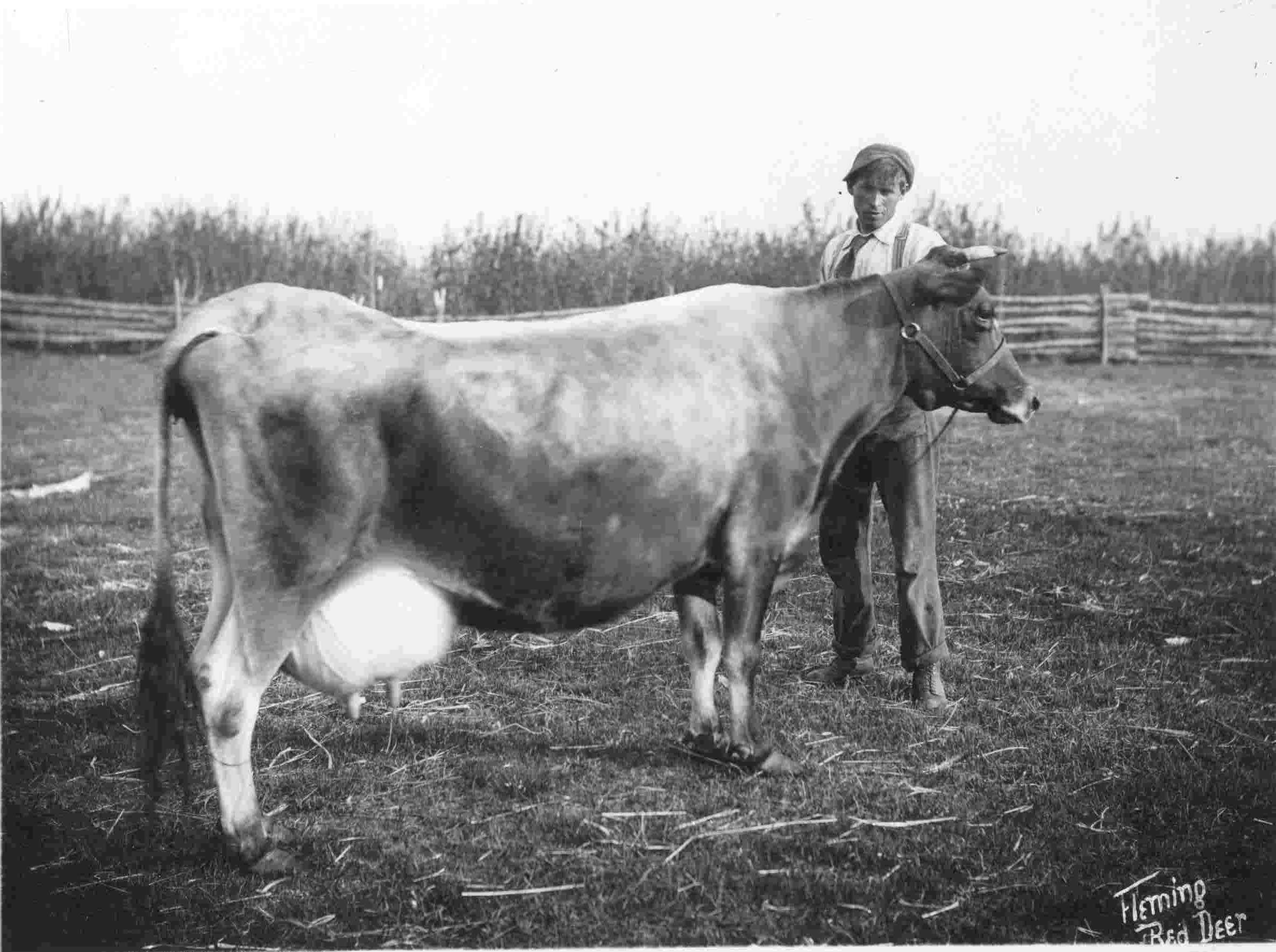There have been many unusual events in Red Deer’s past. One of the most unique events happened 100 years ago in October 1912 when the Red Deer Board of Trade held a lavish banquet for a cow – Rosalind of Old Basing.
To be fair, it was not just any cow. Rosalind was the Jersey dairy cow that held the record for the highest butter fat production by any breed in the British Empire. There was one cow, a Jersey in Lowell, Massachusetts, that beat Rosalind’s record. A statue was erected in honour of that animal.
There were many practical reasons for the Red Deer Board of Trade to make such a fuss over Rosalind. Red Deer was rapidly becoming a major regional agricultural centre. Dairying was becoming an increasingly important part of that flourishing farm community.
Having local animals with high butter fat production records helped to advertise the quality of the local pasturage and the ample year-round supply of water. Moreover, indications of a strong supply of milk and butterfat was an encouragement to the growth of the local creameries. This meant increased income for farmers and more jobs for the townspeople.
The outstanding success of Rosalind as a milk and butter fat producer was not an accident. Her owner, Charles Julian Sharman had invested heavily in building up a high quality herd of Jersey cattle.
He determined that the eye appeal of the animals was less important than the records of their production. Hence, he kept careful records of the quantity and quality of milk produced. If a cow fell below the standard he had set, it was sold off and a more promising animal was acquired.
The wisdom of his approach was proven by the fact that when he exhibited Rosalind, she was never awarded any prizes because she did not meet the usual visual standards of the judges. Nevertheless, she was true world champion producer.
Sharman paid a great deal of attention to other details. He determined that he could purchase wild hay and straw cheaper than he could grow it himself. He then concentrated on growing high quality green feed. He was one of the first in Central Alberta to prove the potential of growing alfalfa. He also experimented with growing fodder corn.
Consequently, when the Board of Trade organized the banquet, they made sure to honour the talents and accomplishments of Sharman as much as the records set by Rosalind.
They also made sure to maximize the impact of the event. When they learned that a group of distinguished agriculturalists would be visiting the Michener Brothers farm east of Red Deer, they quickly changed the date of the banquet so that these experts could be present.
Everything came off extremely well. The hall was quickly sold out. The venue was extensively decorated with all kinds of examples of local produce and grains. A special stall was built at the front of the hall so that Rosalind could be present for the entire evening.
Special menus were printed with a cover photo of Rosalind and Jack Jones, Sharman’s talented herdsman. Instead of the usual toasts of wine or spirits, Rosalind’s own milk was used. There were several courses served during the meal, but no one seemed to object to the fact that one of the main courses was roast beef.
If there was one glitch to the evening, it was the fact that the speeches by the assembled politicians and dignitaries went on until 2 a.m.
Nevertheless, the unique banquet caught the attention of the news media across North America and in Great Britain. Two poems and a song were written about Red Deer’s famous cow. It is unlikely, however, that any of these tributes were a commercial success.
In 1913, when Red Deer was incorporated as a city, a herd of dairy cattle and a row of milk cans were included on the City crest as an indication of the importance of dairying and the international fame of local cows such as Rosalind of Old Basing.



